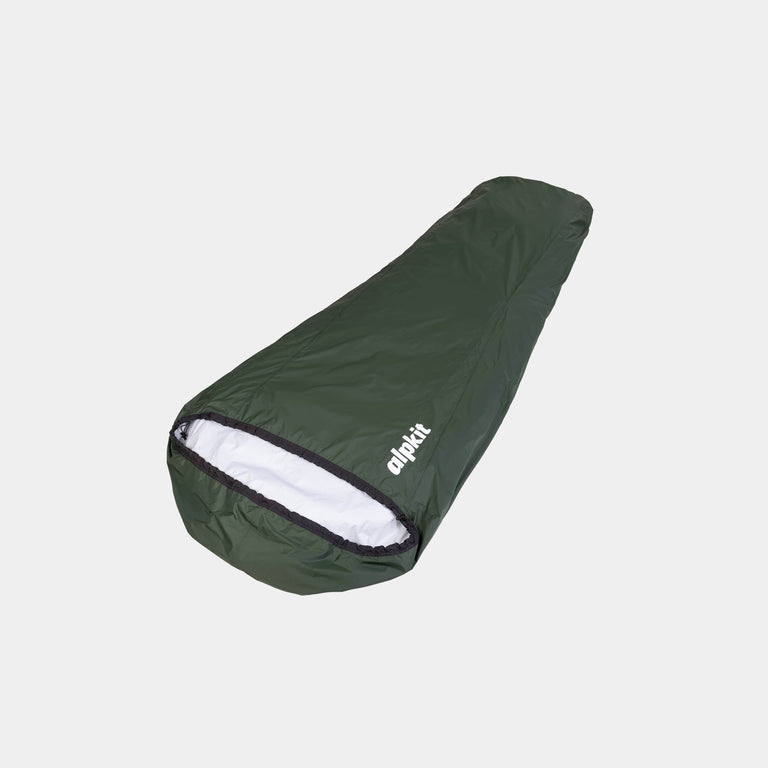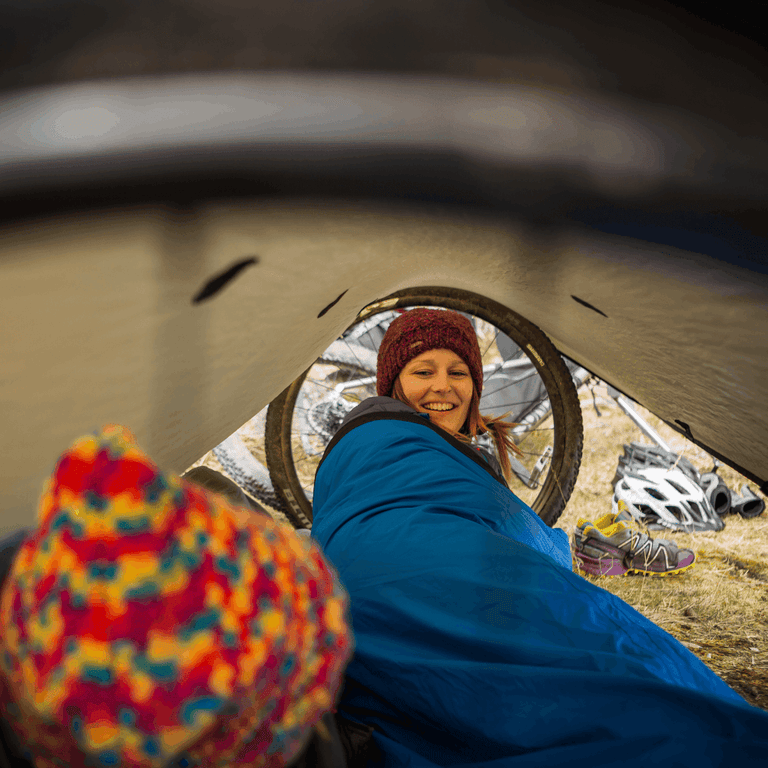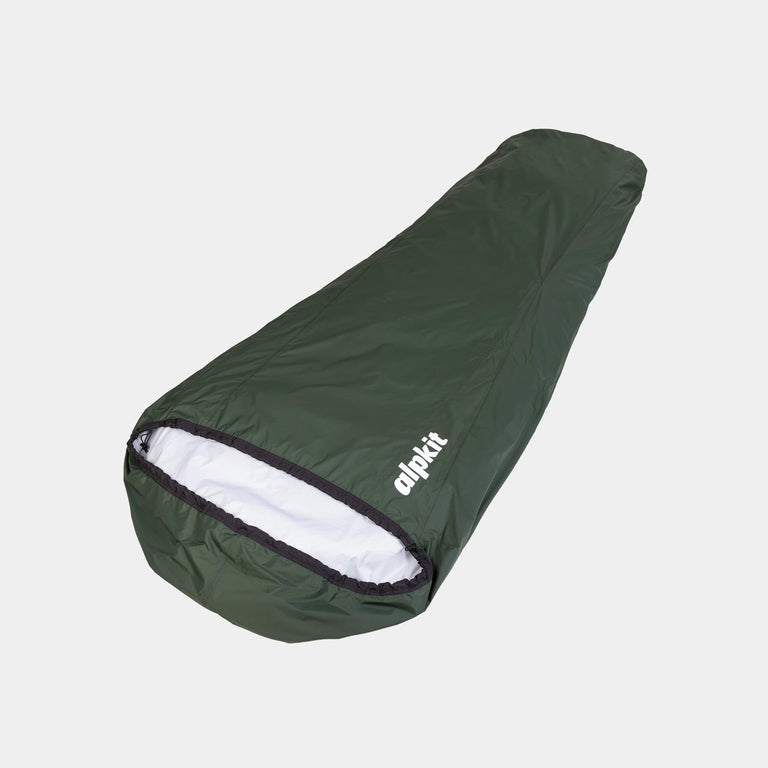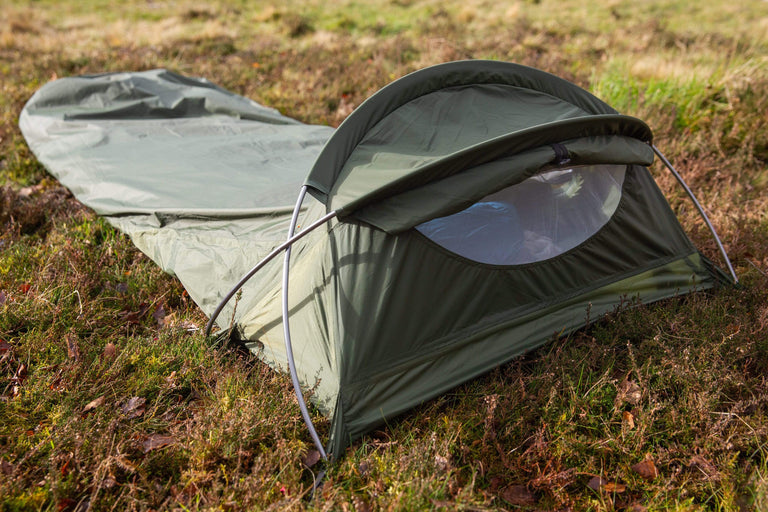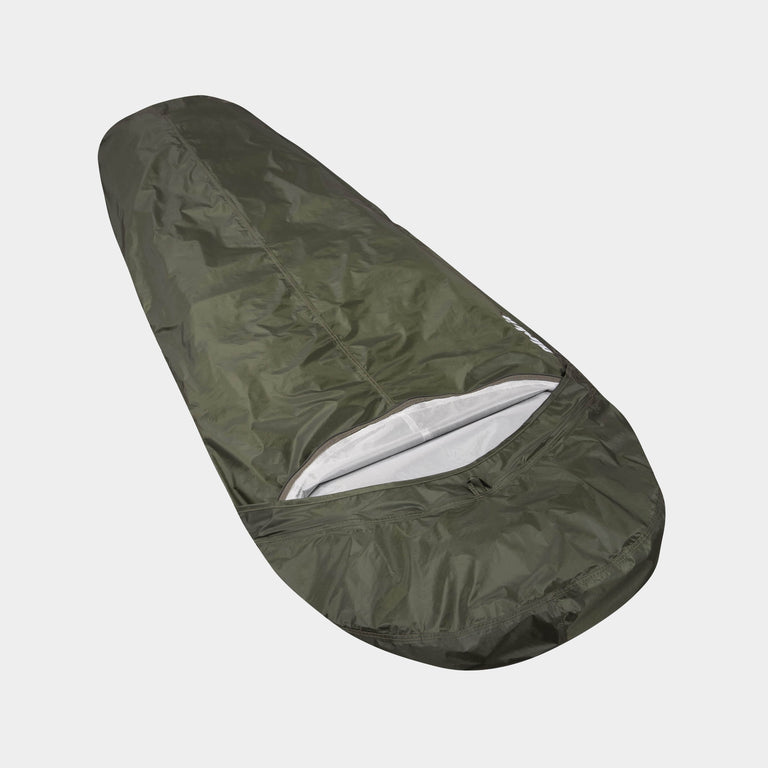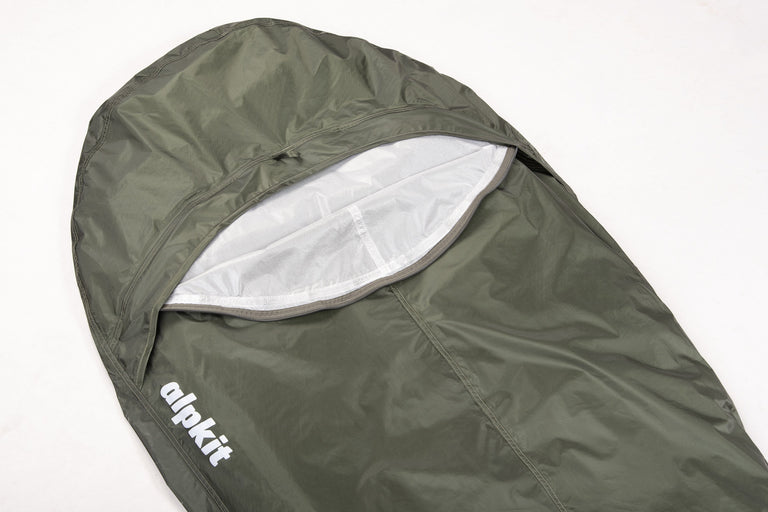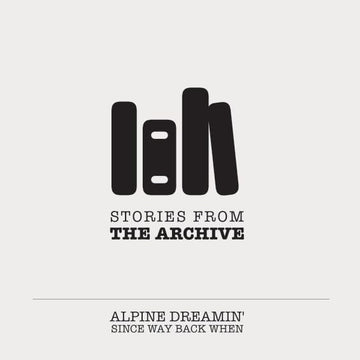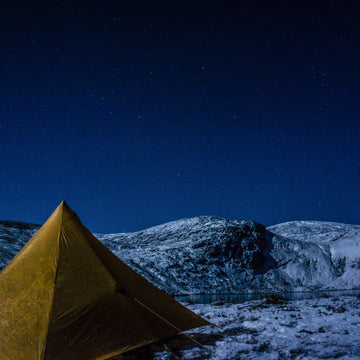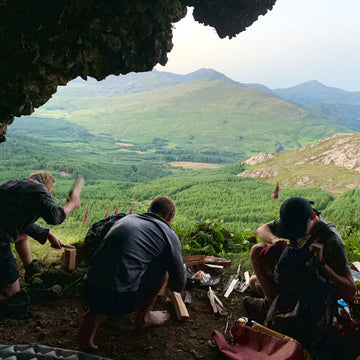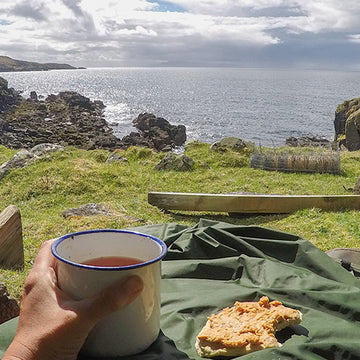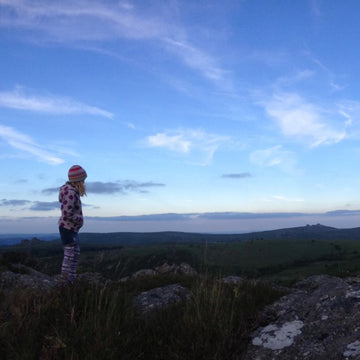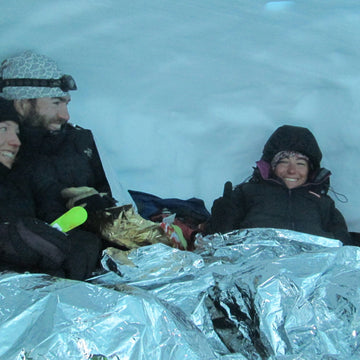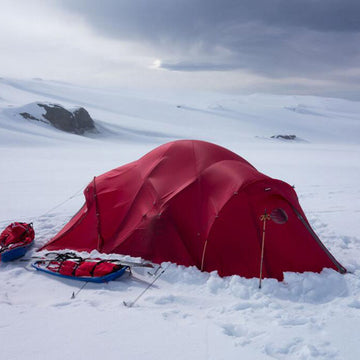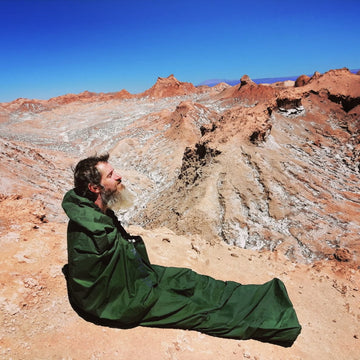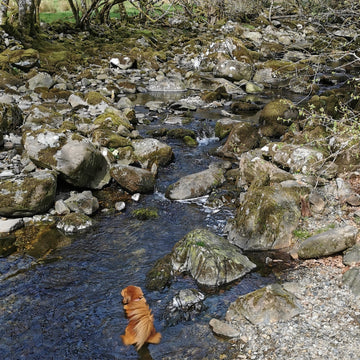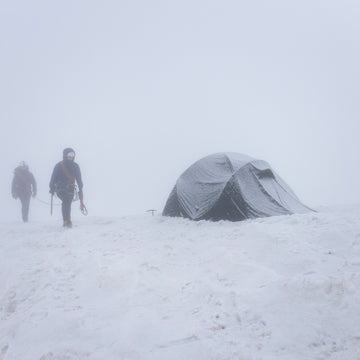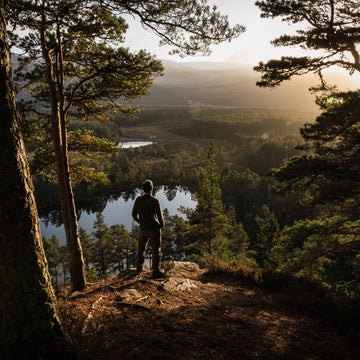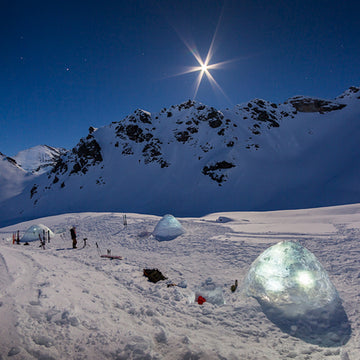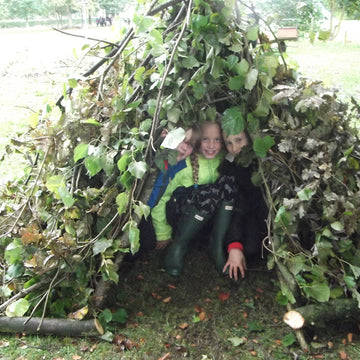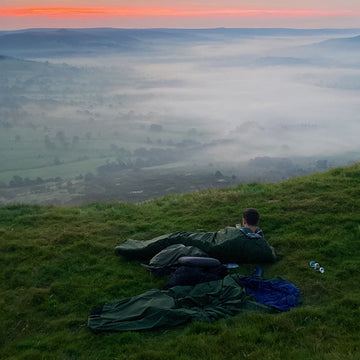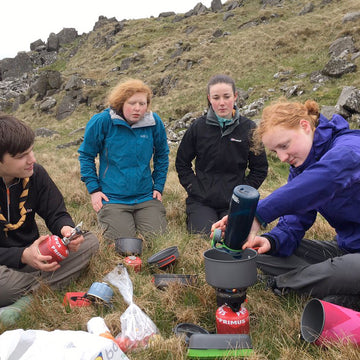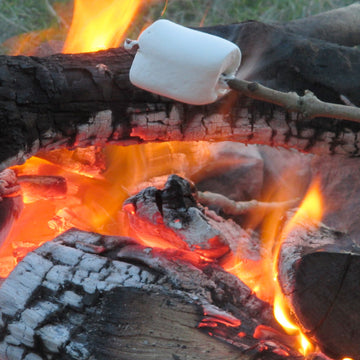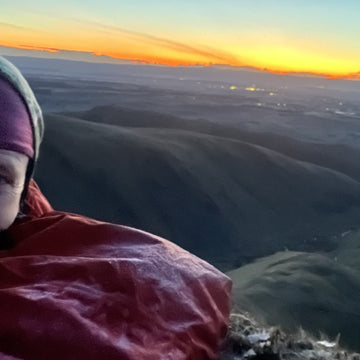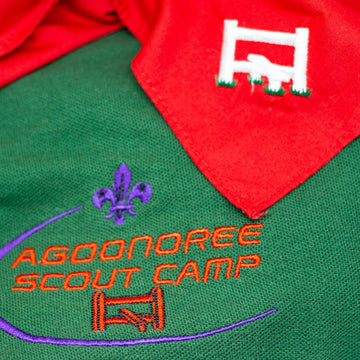Experience the beauty of the Gardena Bivi, where mountains become your home.
Sleeping bag and sleeping mat for an alpine bivvy
AlpineDream 500, 700, 900

ALPINEDREAM 500 (- 5 comfort)
Plus: Full length Thermarest, Outdoor Designs 4star bivy, Alpkit down jacket

With the AlpineDream 500 I had less weight to carry than the others but I couldn't help thinking that I had drawn the short straw. With temperatures expected down to -12 / -15 I made sure I got the full length thermarest and 4star bivy bag. The first evening the sun sank a little to quickly and we prepared our bivy site in the dark. This was the first time I had attempted a winter bivy and looking at my bag layed out on the floor I was dubious that there would be a second. We improvised a stove out of crampons and a pack of fuel gel and boiled some pasta. It took less than a minute to eat, it was 6 o'clock, cold and dark. With nothing to do it was time for bed.
The first problem was getting in the bag without filling it with snow. I was fully clothed (over trousers, down jacket, thermals) but not wanting to lose any heat I dived straight in. Plastic inner boots went between the sleeping bag and the bivy bag, I went in the sleeping bag. Now the fun began, fully zipped up I started to systemise myself. Off with the down jacket, off with the over trousers, I felt like Houdini. By now I was also quite warm.
The bivy bag remained zipped the whole night. The neck baffle stopped hot air escaping and moisture entering into the bag. Ice formed around the bivy zipper but appart from that the bag remained dry. I arranged my down jacket over my midrift; having the least potent bag I thought this was fair. I was never cold during the night, but I was not quite at what I would call 'true' comfort. In the early hours of the morning my feet did become cold, but this is something I have experienced in every bag I have ever owned. I was impressed I had survived a night at -12 in moderate comfort.

The second night I tried to improve my situation. We arrived back to camp late so we were again cooking in the dark. The tinned tomatoes and tuna in oil had frozen during the day, tired and with just one fuel gel left the pasta never really cooked. Nethertheless we knew it was important to get something warm inside ourselves. Keen to have warm feet I put on clean dry socks and put them inside the sleeping bag stuff sack. This acted like a vapour barrier system and my feet stayed warm all night. I also managed to create a better seal with the neck baffle and left the bivy bag slightly un-open. It was a much more comfortable night than the first, perhaps I had 'acclimitised'. Again I used my down jacket as a floating hotspot, it made an excellent compromise between weight/warmth. I could move it to where I was cold which for me was on the tops of the legs.
The experience was very instructional. I had read about it, but until you really do it you don't really know. Despite the quality of your gear it is the preperation and little tricks that make the difference to a good night sleep in conditions where you should not be comfortable at all. The final morning provided a final useful lesson. Frozen thermarests are really difficult to compress into a stuff sac. Kenny
ALPINEDREAM 700 (- 12 comfort)
Plus: Z-Rest, Test model breathable PU bivy, Alpkit down jacket

Ken had suggested some valley in Italy, that's not trying to be ignorant; it's just that there are an awful lot of valleys in the alps and this was yet another I hadn't been to. The plan was to build a snowhole, sleep, climb some ice, sleep and then walk out the following morning. We spent the afternoon in Ortisei hiring snow shoes and buying provisions. Dusk was approaching as we were uselessly trying to cram all our gear in sacs that were too small, we left behind some niceties such as extra cake and a spare pullover.
5k along the trail we made camp. This was not going to be any text book snow hole; we found a half decent tree and started to pile up the snow to keep out the wind. Food was basic, cooked on the mother of all bodged stoves but it was pasta and was warm when it left the pan.
I had an AlpineDream700, which Leeds had tested down to -15C. I had designed them so if I was to be cold it would be my own damn fault. The basic shape is roomy for two very good reasons. If it's cold you will be wearing everything you have; if not then you will want all the room you can as you will probably be to warm. It was cold so I leapt in with everything on, but towards the end of the night I had taken off most of my clothing to provide additional insulation from the ground. I really like the Z-rest, but I cannot recommend it for this kind of use. It tends to collect condensation in the little holes which when I rolled down the bivi cover made the base of the bag slightly wet. I slept OK, I'm not some form of vampire like Ken who could sleep upside down if he had to, but I was warm most of the time.

The next night, after a day on the hill I was fairly exhausted. I had eaten very little food and had drank maybe only 1/2 litre of water. I took some time to improve my sleeping conditions, levelling out the ground and putting everything I could under the Z-rest: salopettes, waterproof jacket, sac, anything to stop the cold seeping through. The water that had collected in the indentations in the Z-rest was frozen but no doubt it would defrost as I warmed up the bag. I changed my damp socks for dry ones and I was genuinely warm when I got in to the bag.

My toes were a little cold because I had my feet resting on top of my inner boots, pressing up against the top of the foot section. Insulation on top was fine, if not cosy, but a slightly damp bottom section and lack of ground insulation acted to counter any warmth I built up. It is generally bad practice to breath into the bag, as you get a build up of condensation inside. I had made the cowl quite large and filled it with synthetic insulation as this would be the first place that my breath would condense. This larger cowl acts as a wind break so you feel you are deep in the sleeping bag but can maintain good air flow, there was still an aesthetic issue of how this closes when you pull it in to form a small hole, it works but I would like to find a better solution. The zip flap was deliberately made over-size so that it was easy to close, I think this will be made just a little smaller for the final production model. Nick
ALPINEDREAM 900 (- 20 comfort)
Plus: 3/4 length Thermarest, Outdoor Designs 2star bivy, Alpkit down jacket
The dashboard displayed a cold -6°c at 2pm; the night was going to be cold. Kenny was slow to get his kit ready and I used the opportunity to make certain I was going to have a warm night. A quick blind weight test bagged me the 900gm bag, I had taken them to Leeds to get them tested and this one had come back with a comfort rating of -23°c. Its larger pack size didn’t seem to make a great deal of difference to my already full 50l alpine sack, perhaps if we were a little more skilled in our preparations it would not have been so full of tins and make shift stoves. The only downside to my decision was my bivi bag, I was going to be using a very basic sample that was developed a considerable amount of time before going into production.

My 3/4 length thermarest had saved some room in my pack but now it looked very short indeed. I opted to keep my inner boots on, a) to stop them freezing overnight and b) to insulate my feet from the ground. The snow had the consistency of Ready Brek, so cold and dry it could not be compacted together. So there I was in a pair of boxer shorts, a tight thermal top and a pair of inner boots. Should the commissioner call on the red phone I would have been out of there like a shot ready to fight crime!!
I started with the bivi bag sealed and things soon warmed up. I awoke early and feeling between the bivi bag and the sleeping bag I noticed the top side was frozen solid but the base was extremely damp, thinking it must just have been condensation I opened the bivi bag. There is security in a zipped up tent or bivi that seems to offer comfort and protection but now my face was open to the night sky and I stared up at the trees quiet in contemplation.
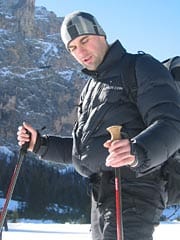
The morning came quickly, I tried to get some more sleep but the dampness was getting to me. Although it was warm now I knew that during the day it would freeze into the down. With another night to come I didn't want that to happen. I sat up and quickly realised that as I had turned in the night snow had piled up underneath me causing me to roll off my mat. Every time I had tried to roll back the bivi bag had twisted to the point I was now laying in it side ways. Unfortunately the upper fabric of this early bivi, although shower proof was never waterproof. It was testament to the bag that even though I spent much of it on the cold ground, I did not feel cold at any point during the night.
I swore to myself the next night would be perfect and smoothed out my sleeping platform while Ken and Nick were trying to make a cup of coffee. Our water situation was quite critical and we only had one fuel cell for dinner, let alone melting snow for drinking water. I had kept a Camelbak in my down jacket all day and it had proved such an effective method of melting snow that I decided I would sleep with this overnight. It is inevitable what was going to happen!! The weather had set fair and the bivi offered better protection on top of it rather than in it. Again I stripped down to my superhero outfit and soon drifted off. I awoke suddenly with a wet feeling underneath my chest. Momentarily in a dream state I did nothing, then remembered the Camelbak!! I grabbed it and tossed it out of the bag, no mean feet when the bag neck was closed tightly. I managed to position myself in my bag to avoid the damp section and returned to sleep. The autopsy in the morning showed the lid of the Camelbak had become clogged with ice preventing me from sealing it properly. In my bag the ice had melted letting the contents empty at will.
Even under intense user ineptness the bag performed remarkably well and I got two solid nights sleep, both inside and on top of the bivi bag. My feet remained warm inside the inner boots of my plastics and the size of the bag meant I had plenty of room for them. Not bad considering I wear size 11 Asolo 101’s. This slightly larger size also meant I was able to undress inside the bag with both the neck and shoulder baffles pulled tight. I was happy with the 900 but due to a slightly smaller pack size I would opt for the 700 and take a functional bivi bag next time. Jim

